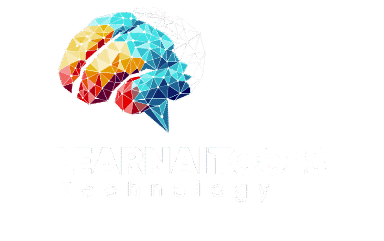
AI Transparency 2025: Building Trust in the Age of Artificial Intelligence
Introduction
AI Transparency 2025 is emerging as one of the most critical discussions in the world of artificial intelligence. As AI systems become more integrated into healthcare, finance, education, and governance, the need for transparent algorithms, data usage, and decision-making processes is growing rapidly. Transparency is no longer optional; it is the foundation of trust between humans and machines.
The Growing Importance of AI Transparency 2025
AI Transparency 2025 highlights how organizations, governments, and researchers are focusing on explainable AI (XAI). People want to know why an algorithm made a decision—whether it is approving a loan, diagnosing a disease, or recommending a sentence in court. Without transparency, AI risks becoming a “black box” that weakens trust and accountability.
Challenges in Achieving AI Transparency 2025
AI Transparency 2025 also points out major challenges. Complex neural networks often process millions of parameters, making it difficult to explain decisions in simple terms. Companies face the dilemma of protecting intellectual property while also ensuring accountability. Additionally, bias in training data often results in unfair or inaccurate outcomes, which only strong transparency practices can expose.
Benefits of Prioritizing AI Transparency 2025
Transparency 2025 shows that clear and open AI practices bring multiple benefits. First, it increases public trust, encouraging adoption in sensitive sectors like healthcare. Second, it reduces the risk of bias and discrimination. Third, it enables policymakers to create fair regulations. Transparency also improves collaboration between humans and machines by making decisions understandable and trustworthy.
AI Transparency 2025 in Governance and Policy
AI Transparency 2025 is driving new global policies. The European Union’s AI Act and the United States’ proposed AI Bill of Rights emphasize fairness, accountability, and transparency. By 2025, many countries are expected to adopt legal frameworks requiring companies to disclose how their AI models are trained, what data they use, and how decisions are made.
Industries Leading with AI Transparency 2025
Transparency 2025 is being embraced by industries worldwide. In healthcare, hospitals are using explainable AI for diagnosis so doctors can understand algorithmic reasoning. In finance, banks are creating transparent loan approval systems to avoid bias. In education, adaptive learning platforms now explain how they personalize lessons. These industries are proving that transparency improves both efficiency and ethical responsibility.
AI Transparency 2025 in Technology Development
Transparency 2025 is shaping the future of AI research. Developers are working on new frameworks like Explainable AI (XAI), model interpretability tools, and auditing algorithms. Open-source platforms are being created to allow peer review and testing, making AI development more accountable. Startups focusing on transparency solutions are gaining investment, signaling a market shift toward responsible AI.
Ethical Dimensions of AI Transparency 2025
Transparency 2025 raises critical ethical questions. If AI decisions are hidden, accountability disappears. Transparency ensures fairness, prevents discrimination, and protects users’ rights. It also aligns with ethical AI principles like beneficence, autonomy, and justice. By 2025, ethics committees and independent auditors are expected to become standard in all major AI projects.
The Future of AI Transparency 2025
AI Transparency 2025 represents a vision where every AI-driven decision is explainable, traceable, and understandable. In the near future, users may demand transparency labels—similar to nutrition labels on food—showing how AI systems operate. This could transform public trust and set global standards for responsible AI.
Conclusion
AI Transparency 2025 is not just a technological requirement—it is a social necessity. By ensuring openness, fairness, and accountability, transparency can help AI unlock its full potential without sacrificing ethics or trust. From industries to governments, every stakeholder must commit to building a transparent AI future.
AI Transparency 2025 represents the path toward responsible innovation, where people can confidently embrace artificial intelligence as a tool for progress, rather than fear it as a black box. To explore more insights on AI and its future, visit Learn Ai Tools.




